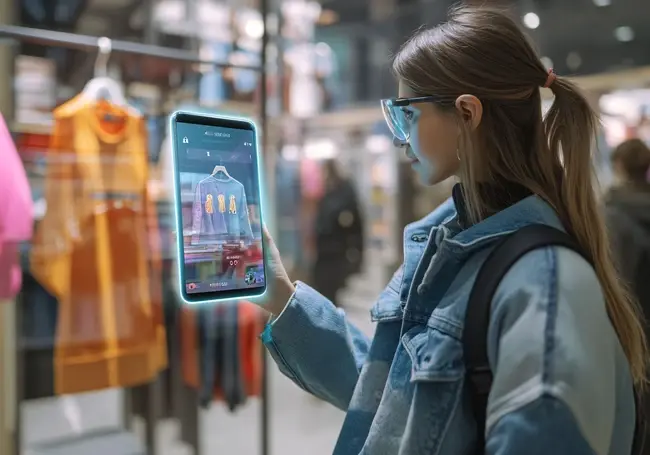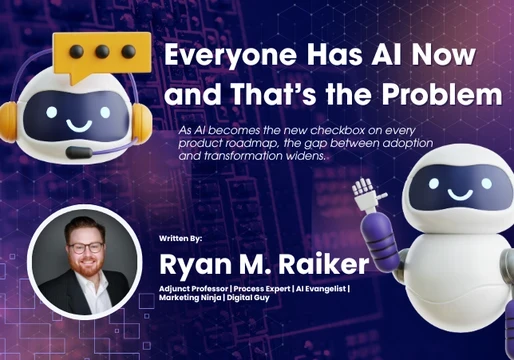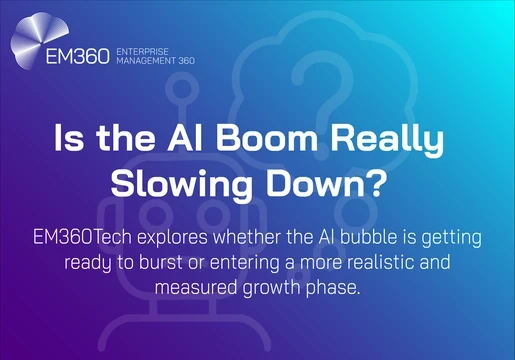The fashion industry is at a crossroads—and artificial intelligence is leading it into a smarter, greener era. In 2025, AI sustainable fashion isn't just a buzzword. It's a revolution that blends eco-conscious innovation with style, helping both consumers and brands rethink what fashion can be. From minimizing textile waste to enabling virtual try-ons, AI is transforming how we shop, wear, and dispose of clothing.
It's not just about looking good anymore—it's about doing good, too. The integration of AI into fashion sustainability efforts is enabling real, measurable change. For brands, this means a more efficient supply chain and a reduced environmental footprint. For consumers, it means better choices, less waste, and more personalized shopping journeys.

Smart Tech for a Greener Wardrobe
Reducing Waste with Smarter Supply Chains
Fashion has a serious waste problem. In the U.S. alone, over 186 billion pounds of textile waste are generated each year—much of it due to overproduction, returns, and changing trends. AI sustainable fashion is helping brands combat this issue through intelligent, data-driven forecasting and inventory management.
By analyzing consumer behavior, seasonal buying patterns, and even local weather trends, AI helps brands better predict what, when, and how much to produce. This minimizes overproduction, cuts back on unsold stock, and optimizes delivery routes—all of which reduce environmental impact.
Retail giants and independent brands alike are leveraging AI not just to forecast demand, but to act on it in real time. For example, dynamic pricing and stock adjustment algorithms ensure that what’s produced is what’s likely to be purchased—no more, no less.
In addition, AI is now being used to sort and assess textile waste, identifying reusable fibers that can be redirected back into production cycles. These systems are capable of recognizing fabric type, color, and condition, allowing as much as 70% of discarded material to be rerouted into recycling or upcycling programs. This level of precision supports the transition toward a circular fashion economy, where waste becomes raw material.
The Rise of Circular Fashion
AI-Powered Resale & Repurposing
The future of fashion isn’t linear—it’s circular. And AI is the driving force making circularity not only possible but scalable. From resale platforms that track garment history to machine learning algorithms that help consumers find pre-loved fashion that matches their style, AI sustainable fashion is revolutionizing how clothes live beyond the first purchase.
Companies like Circ are already using AI to break garments down into individual fibers, such as cotton and polyester, and regenerate them into high-quality new textiles. This means your future wardrobe could be made entirely from yesterday’s fashion faux pas—without sacrificing quality or aesthetics.
Resale and rental platforms are also benefiting from AI. By learning a user’s taste, preferences, and lifestyle, AI can recommend secondhand pieces that feel like they were chosen just for you. It’s fashion-forward, wallet-friendly, and earth-conscious—all at once.
Sustainable Design Meets Tech
Eco-Friendly Materials, AI-Curated
Gone are the days when choosing sustainable fabrics felt like a guessing game. With AI-powered tools, designers can now evaluate the environmental impact of materials before they ever reach the cutting room floor. These tools consider factors like water usage, chemical treatments, biodegradability, and carbon emissions.
With a few clicks, a designer can identify the most ethical and sustainable options—whether it’s -based denim, pineapple leather, or lab-grown silk. AI then helps match those materials to the designer’s aesthetic goals, making it easier than ever to merge sustainability with style.
AI also enables on-demand production models, which significantly cut down on unsold inventory. Instead of mass-producing garments that may or may not sell, designers can create customized pieces in real time—responding directly to consumer demand while avoiding overstock and reducing material waste.
Try Before You Buy—Sustainably
Virtual Try-Ons Cut Down on Returns
One of fashion’s little secrets? Returns. Many returned garments don’t go back into inventory—they end up in landfills. But with AI-powered virtual try-ons, shoppers can see exactly how clothes will look and fit on their bodies before hitting “buy.”
These tools are getting smarter every year. Google’s AI try-on feature now showcases clothing on a wide variety of diverse, real-life body types, helping consumers find pieces that truly work for them. This makes shopping not only more sustainable but also far more inclusive.
AI-integrated platforms are also leading the charge. By delivering personalized outfit suggestions based on your body type, fashion preferences, and even lifestyle habits to help you shop smarter—not harder, providing eco-conscious shopping and mindful consumption. This results in fewer impulse buys, better long-term satisfaction, and dramatically fewer returns.
It’s a win-win: shoppers get a wardrobe they love, and the planet breathes a little easier.
Transparency Through Tech
AI + Blockchain = Accountability
Today’s shoppers want transparency. They want to know where their clothes came from, who made them, and what their environmental impact is. AI sustainable fashion meets this demand through powerful tech integrations, especially when paired with blockchain.
Blockchain ensures that every step of a garment’s journey—from raw materials to retail—can be verified and tracked. AI processes this information, highlighting any inconsistencies or ethical concerns in the supply chain.
Luxury brands like Givenchy and Breitling use this combo to authenticate products and eliminate counterfeit goods. But it’s not just for high-end fashion anymore. Thanks to AI, this level of transparency and accountability can now scale to mid-sized and even small labels, leveling the ethical playing field across the industry.
Shoppers can scan a QR code and instantly view a garment’s journey—right down to the factory it was made in and the sustainability score of its materials.
Data Meets Design: AI Gets Creative
Hyper-Personalized Fashion
Fashion isn’t just about looking good—it’s about feeling understood. And that’s where AI shines. By analyzing data points like browsing habits, previous purchases, social media likes, and even climate conditions, AI delivers fashion that feels custom-built for the wearer.
This level of personalization doesn’t just make shoppers happier—it makes fashion more sustainable. Why? Because people are more likely to keep and wear items that genuinely reflect their taste and needs, reducing wasteful returns and discarded impulse buys.
AI is also entering the design studio. Designers are co-creating with AI, using tools that suggest silhouettes, color palettes, and even cultural influences based on current and predictive trend data. It’s fashion fueled by insight rather than guesswork.
Sustainable Fashion, Scaled
Leveling the Playing Field
Historically, sustainable fashion was a luxury few could afford. The high cost of eco-friendly materials, ethical sourcing, and small-batch production put it out of reach for many brands and buyers.
But AI is changing that. With automated forecasting, demand prediction, and even AI-generated marketing content, small and mid-sized brands can now compete on a larger scale. They can optimize supply chains, reduce waste, and deliver personalized shopping experiences without breaking the bank.
For consumers, this means that AI sustainable fashion is becoming the norm—not the exception. Whether you're shopping high-end or high street, chances are your favorite pieces are being powered by AI behind the scenes.
Final Thread
From waste to wear, AI is transforming fashion from the inside out. It powers circular business models, enhances supply chain transparency, reduces overproduction, and brings a whole new level of personalization to design.
Most importantly, AI sustainable fashion proves that style and ethics don’t have to be at odds. You can have that statement jacket, eco-conscious jeans, or perfectly fitted dress—and still feel good about the choices you’ve made.
In a world where climate concerns are no longer optional, fashion’s AI revolution offers a blueprint for a better-dressed and better-planet future. So whether you're a designer, a shopper, or just fashion-curious—AI is the reason your next outfit might look good and do good.







Comments ( 0 )